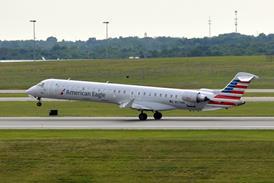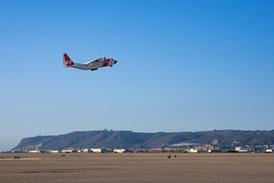PAUL LEWIS / WASHINGTON DC AND JUSTIN WASTNAGE / COLOGNE
Aircraft maker looks at standardising production line with new 50-seater as part of long-term strategy
Bombardier has been discussing a "shrink" derivative of the CRJ700 with customers as a possible successor to its successful 50-seat CRJ100/200 series, as the regional aircraft manufacturer weighs up it its long-term strategy in that market sector.
The proposed design, believed to be codenamed "CRJ500", would essentially be a 50-seat version of the 70-seat CRJ700, incorporating the larger wing and leading edge slats, as well as its redesigned fuselage structure. The engine would be standardised on the CRJ700's increased thrust General Electric CF34-8C1. The CRJ700's reduced depth fuselage frames provide about 25mm (1in) more cabin width than the CRJ100/200, while the floor is 130mm lower and the window line 150mm higher.
John Giraudy, Bombardier's senior vice president of regional aircraft sales says that "because we have to justify every gram of metal we put in the air, we talk about any new project with our most important customers". The manufacturer, however, officially declines to comment on the study.
Lufthansa CityLine, which is a major CRJ operator with 45 50-seaters in service and is just introducing the first of 20 CRJ700s, confirms that it has been involved in the studies but does not have an immediate need for the aircraft.

CityLine managing director Dr Thomas Dräger says that although the increased cabin diameter allows better window positioning, bigger baggage compartment and additional headroom, the increased costs of using a bigger wing does not make the choice economical. "Customers we've polled do not have a negative image of the cabin size of the CRJ200," he says.
The CRJ500 would offer improved performance and range, and a more comfortable cabin, albeit at increased operating costs. With just 30% commonality between the 50-seat CRJ and the new 70/90-seat CRJ700/900 family, it would provide fleetwide standardisation for operators of all models. Bombardier could also have a standardised CRJ200/700 production line.
The CRJ200 design is 12 years old, and is itself based on the 25 year old Challenger business jet airframe. The dilemma faced by Bombardier is whether demand and competition in the 50-seat sector will warrant the investment in the CRJ500, and it if does, at what point does it switch from the current model?
Source: Flight International























